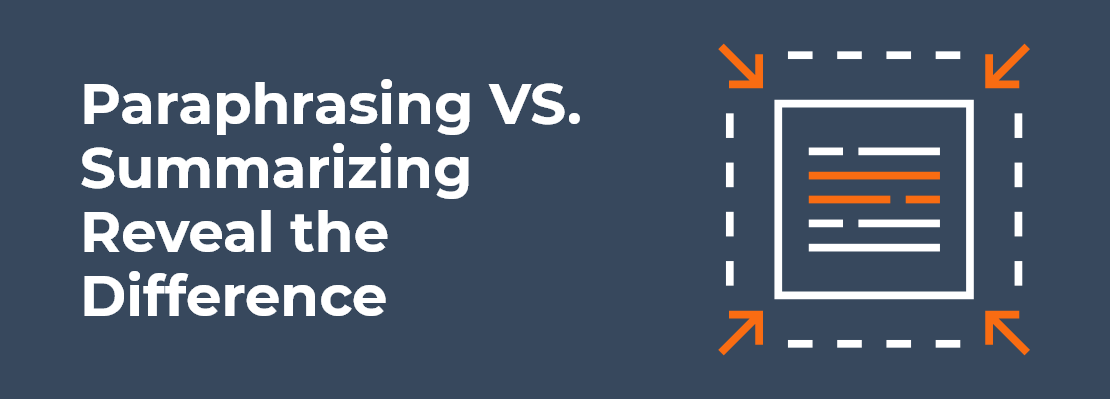
Imagine that you are working in a multinational company. Your supervisor asks you to survey the market and deliver a report on the performance of a particular product. Now, you need to meet different individuals from the market and listen to their opinions about the products. You can also request them to share their views in written form. Once you get enough textual information, you need to summarize it to make an accurate final report that can be delivered to your supervisor. However, many people get confused between summarizing and paraphrasing and consider both the same. Therefore, in today’s article, we will focus on these terms and determine the major differences between them. So, stick to the article till the end to get the most out of it.
Paraphrasing
Using your own words to interpret the information or ideas shared by someone else is known as paraphrasing. Explaining the concept in your words will help you deliver the information effectively and make it more understandable to your audiences. It is also important to mention here that the whole process excludes the duplication of the content at any level. It is just like you get the hint from an article and transform it into your own words. There are various reasons for paraphrasing content. People paraphrase text to explain a point, give depth to their content, or don’t want to quote anyone in the article. It is also used to simplify the work of others and to uplift the article’s readability, and make it more exoteric.
Summarizing
When you have lengthy data and need to focus on the main idea of the content, you will try to highlight the crucial points only that can elaborate the whole concept. This process is known as summarizing. The summary of the content is shorter than the original content but includes all the important points. The summarization of an article excludes the explanation but includes the major headings or the basic idea of the information. A summary is mostly used to explain the main idea of the content or give an overview of the article. It is also used when your supervisor or teacher asks about the idea you want to convey.
Major Differences Between Paraphrasing and Summarizing
The primary difference between paraphrasing and summarizing is in functionalities. A summary restates the major points of the whole content and explains the idea, so it becomes easier for the reader to understand it effectively. Summarizing doesn’t mean that you have to restate all the information mentioned in the content. You only need to highlight the main points that can demonstrate the idea of the entire article. It is also important to state here that a summary of the content is always short than the source text. In contrast, paraphrases assist in simplifying a passage. You are required to discuss every piece of information the writer has mentioned in the original content. There is also no restriction about the length of the text, as a paraphrased material can be longer than the actual writing.
In paraphrasing, you read the idea of the content, understand it, and convey it in your own words. However, there should be no missing piece, and each piece of information must be covered while paraphrasing textual information.
Final Thoughts
Writing is a vast term, and it incorporates different types. All you need is to have a firm grip over them. However, paraphrasing and summarizing are two significant aspects of writing that help an individual to explain an idea effectively. Many people often argue that both of them are more or less the same, but that isn’t true. This blog will help you get familiar with the importance of paraphrasing and summarizing and the major difference between them.
